Broadmoor lives!
Rising from the dust of moldy atomized sheetrock and dessicated sludge, fortified by the abdication of local government, rose a newfound sense of civic belonging in New Orleans, of neighbors finding each other and forging a new compact based upon the need for security and companionship.
One of the stories told a few weeks ago at a forum on the Kobe earthquake was how Kobe citizens spontaneously began planting fields of sunflowers on the bulldozed lots where homes once stood. The movement may have been inspired by a young girl who was killed in the earthquake.
A Japanese documentary, "Haruka's Sunflowers", told the story:
"Haruka" is the name of a little Japanese girl who died in the disaster. Haruka Kato lived with her elder sister and the parents. She was the only victim of the family. In summer, 6 months after the earthquake, something strange happened in the now vacant lot where Kato's house used to be. Lost of sunflowers bloomed in the very spot where Haruka died.
The sunflower became a symbol of renewal around Kobe, appearing not just on vacant lots, but on flags flown above the ruined streets, on billboards and buses. The sunflower represented more than physical renewal, but spiritual and civic renewal as well.
One of the most positive outcomes of the Kobe disaster was that citizens discovered they could overcome the distance that separates people settled into routine urban lives. In the wake of the disaster, they found they had to rely upon each other, so they bound together for security, to help one another, and to combat a vision to rebuild the city that didn't include them. In citizens' councils, they created their own vision for the future which, to be sure, required compromise, but the authorities were forced to work with them to create an outcome that everyone could live with.
Similarly, from the ruins of Hurricane Katrina, civic associations formed across New Orleans, at first when "new urbanist" planners suggested that some neighborhoods would better be bulldozed than be rebuilt, and that they be converted into green space.
Pre-Katrina, people took for granted that they always had gas and electricity, that they could count on the police to patrol, that they could expect that the garbage would be picked up on schedule (most of the time), when ... well, you couldn't really always count on the Sewerage and Water Board ... anyway, people took for granted that the government was supposed to do work for them.
Now, New Orleans citizens have seen the complete breakdown of government authority at all levels (the breakdown was there before, but wasn't revealed until a natural disaster ripped away the curtain of lies). Now, New Orleanians know they can't take for granted that local, state, and federal authorities will do what they're supposed to do. In neighborhoods where residents may not have known each other, suddenly they found each other, and began organizing themselves for mutual aid and security, demanding that their vision for how their neighborhoods would rebuilt be respected. The fight isn't nearly over yet.
One example of how neighbors have collectively begun to take over where government has failed can be seen in the Broadmoor neighborhood where residents got together to replace street signs which the city couldn't, or wouldn't, replace. These street signs are like Kobe sunflowers -- symbols of a renewed sense of purpose, of pride in place, of neighbors learning how to work together, of strength in civic organizations. It's the new New Orleans.

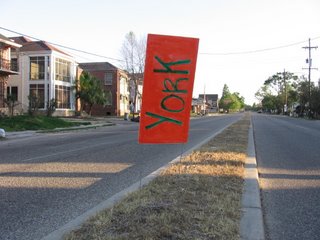


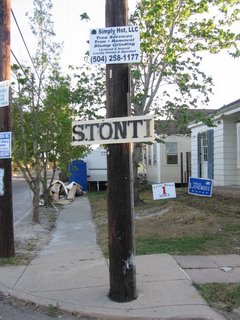
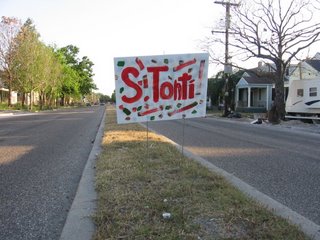


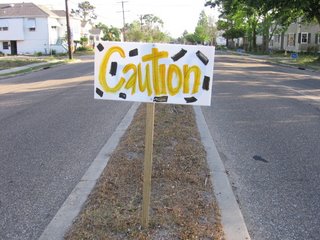


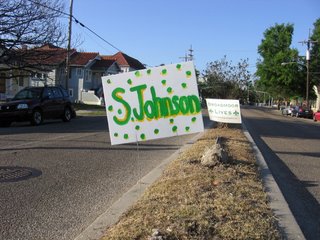

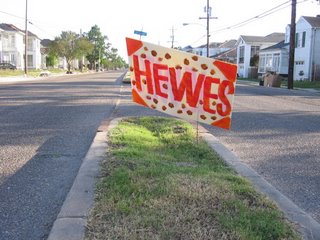

4/21/06 clarification: Though these signs are posted on Nashville Avenue, what I think is the border of the Broadmoor neighborhood, my understanding is that they were actually made primarily by members of the Claiborne-University Neighborhood Organization.
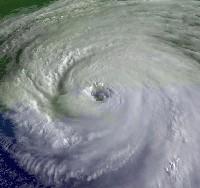





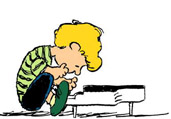
4 Comments:
The streetsigns are really good--they remind me of something I heard about Dario Fo, who won the Nobel Peace Prize several years ago. If I remember right, in postwar Italy he helped organize neighborhood "work groups" that would do things like fix potholes in the streets, etc. The government wouldn't or couldn't take care of basic services, so the people did.
Also if I remember right, this used to upset the government to no end...go figure.
Viva Broadmoor!
I particularly like the McKenna sign that looks like tiles.
Nice insight Michael.
Ah yes Ashley. Look closer -- it's a set of shutters!
Wonderful signs. We are all orderly human beings. That is what binds us as a society, that we care about the collective well-being. They are very loving and proud looking, I think.
Post a Comment
<< Home